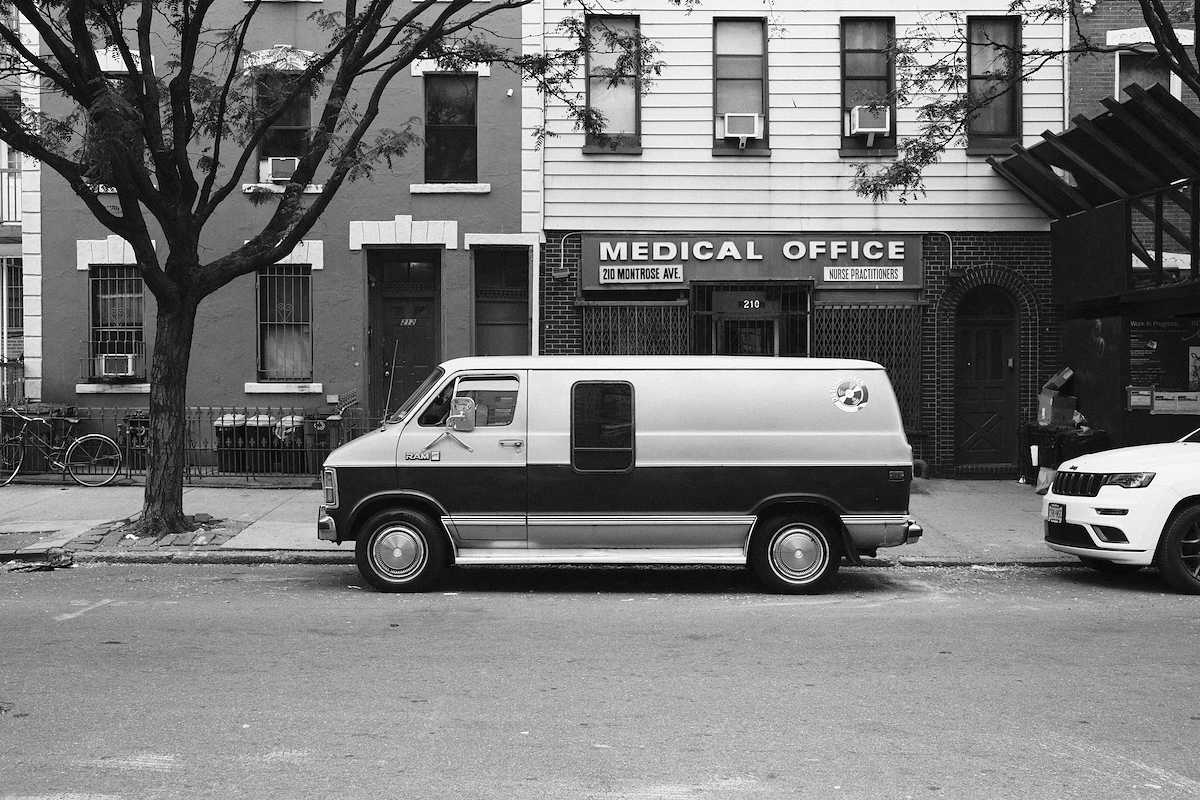Starting a medical transportation business is a rewarding venture that combines a passion for helping others with sharp business savvy. The non-emergency medical transport market is a multi-billion dollar industry, driven by the constant need for rides to doctor's appointments, therapy sessions, and for hospital discharges.
This guide will take you through the practical steps of validating your business concept, obtaining the necessary licenses, acquiring the right vehicles, and securing funding to help you launch a successful medical transportation business in the U.S.
Step 1: Plan your business and validate your idea
Begin by researching your local market. Contact discharge planners at hospitals and administrators at nursing homes or dialysis centers. Ask them about their current transportation providers and any unmet needs they have.
This direct feedback is more valuable than generic market reports. You will learn about specific route demands, required vehicle types, and potential contract opportunities before you spend a dime.
Once you understand the demand, you can analyze the competition. A frequent misstep is underestimating the number of existing providers. Use the Department of Transportation's SAFER database to find registered carriers in your service area.
Estimate your startup costs
Your budget will shape your entire operation. An ADA-compliant van can range from $30,000 to $70,000. Commercial insurance is another significant line item, often costing between $8,000 and $15,000 annually per vehicle.
Also, factor in licensing fees ($500-$2,000), dispatch software ($100-$500 monthly), and a contingency fund. Total initial costs typically fall between $40,000 and $90,000 for a single-vehicle operation.
Here are 3 immediate steps to take:
- Contact two local healthcare facilities to inquire about their patient transport needs.
- Use the SAFER database to identify three competitors operating in your city.
- Request initial quotes for commercial auto and liability insurance from a specialized agent.
Step 2: Establish your legal entity and secure licenses
You should consider forming a Limited Liability Company (LLC). This structure protects your personal assets if the business is sued. It also offers pass-through taxation, meaning profits are taxed on your personal return, which simplifies accounting when you first start.
Navigating the licensing maze
At the federal level, the Federal Motor Carrier Safety Administration (FMCSA) is the main regulatory body. You must register through its Unified Registration System to obtain a U.S. Department of Transportation (USDOT) number. This is a non-negotiable first step for interstate transport.
State and local requirements vary significantly. Contact your state’s Department of Health or Transportation for specific Non-Emergency Medical Transportation (NEMT) provider applications. Your city or county clerk’s office will handle your general business license, which is also required.
The FMCSA operating authority application costs about $300. State permits can range from $100 to over $1,000. A frequent misstep is underestimating the 30-to-90-day processing window for these permits. Apply as soon as your LLC is formed to prevent launch delays.
Here are 4 immediate steps to take:
- File for an LLC with your state’s Secretary of State office.
- Apply for a USDOT number using the FMCSA’s Unified Registration System.
- Identify and download the NEMT provider application from your state’s Department of Health website.
- Call your city clerk’s office to ask about the process for a local business license.
Step 3: Secure insurance and manage risk
Understand your coverage needs
Your largest insurance expense will be commercial auto liability. Expect to need at least $1 million in coverage to satisfy contracts with brokers and healthcare facilities. Annual premiums often range from $8,000 to $15,000 per vehicle.
A frequent misstep is to assume a personal auto policy will suffice. It will not. You must have a commercial policy. In addition, you will need General Liability and Professional Liability (also called Errors & Omissions) to cover non-vehicle incidents.
You might want to get quotes from providers who specialize in NEMT, such as Insureon, Progressive Commercial, or The Hartford. A specialized agent understands the unique requirements and can often find better rates than a generalist.
Address key operational risks
Beyond vehicle accidents, your main risks involve patient safety and data privacy. A patient could fall during a transfer, or a lost schedule could lead to a HIPAA violation. You should create simple, written procedures for both to show due diligence.
Here are 4 immediate steps to take:
- Request quotes for a $1 million commercial auto liability policy.
- Ask an agent about a Business Owner's Policy (BOP) to bundle general and professional liability.
- Contact two insurance providers that specialize in medical transportation.
- Draft a one-page safety protocol for patient assistance and data handling.
Step 4: Set up your location and acquire equipment
You can likely run your business from a home office when you start. This saves thousands on rent. Check your local zoning laws for any restrictions on home-based businesses, but most NEMT operations do not require a commercial storefront. A dedicated phone line and computer are enough.
Outfit your vehicles for compliance
The vehicle’s interior is just as important as its engine. An ADA-compliant wheelchair lift or ramp is a major investment, typically costing between $3,000 and $8,000 installed. You will also need a four-point wheelchair securement system, such as those from Q'Straint or Sure-Lok, which run $300 to $600 per kit.
Many new owners make the mistake of buying cheaper, non-compliant tie-downs. This is a serious error that compromises passenger safety and can invalidate your insurance. Also budget for a fire extinguisher, a comprehensive first-aid kit, and a spill kit for each vehicle.
You can find pre-converted vehicles or have your own van retrofitted. Look for certified mobility dealers in your area that work with brands like BraunAbility or Vantage Mobility International (VMI). They can ensure all installations meet federal standards.
Here are 4 immediate steps to take:
- Check your city’s website for home-based business permit requirements.
- Get a quote from a certified mobility dealer to install an ADA-compliant wheelchair lift.
- Price out a Q'Straint or Sure-Lok four-point securement system.
- Assemble a vehicle safety kit with a first-aid kit, fire extinguisher, and spill kit.
Step 5: Set up your payment processing
Most of your revenue will likely come from contracts with brokers or facilities, who often pay on Net-30 or Net-60 terms. This means you invoice them and get paid 30 to 60 days later. A frequent challenge for new operators is managing cash flow while waiting for these payments.
For private-pay clients, you should collect payment at the time of service. This is where a simple, mobile payment system becomes valuable. You need a way to accept cards without clunky hardware or high fees.
Accepting on-the-go payments
For medical transportation businesses that need to accept payments on-site, JIM offers a streamlined solution. With JIM, you can accept debit, credit, and digital wallets directly through your smartphone. Just tap and you are done. The rate is just 1.99% per transaction with no hidden costs or extra hardware needed.
This is much lower than the 2.5% to 3.5% commission many other payment processors charge. It's particularly useful for collecting fares from private-pay clients at pickup, which avoids billing hassles later. Getting started is straightforward.
- Get Started: Download the JIM app for iOS.
- Make a Sale: Type the sales amount, hit sell, and ask your customer to tap their card or device on your phone.
- Access Funds: Your money is available on your JIM card as soon as the sale is done. There is no waiting for bank transfers.
Here are 3 immediate steps to take:
- Decide on your payment policy for private-pay clients (e.g., payment at time of service).
- Research simple invoicing software for your contract clients.
- Download the JIM app to prepare for on-the-go card payments.
Step 6: Fund your business and manage finances
Explore your funding options
The Small Business Administration (SBA) 7(a) loan is a popular choice. Lenders often look for a credit score above 680 and a strong business plan. For a single-vehicle startup, loans typically range from $50,000 to $150,000 with interest rates around Prime + 3%.
You might also consider equipment financing specifically for your vehicle. This loan is secured by the van itself, which can make it easier to qualify for. Some owners make the mistake of using personal credit cards, but this often comes with higher rates and puts personal assets at risk.
While less common, you can search for grants on Grants.gov using keywords like "medical transportation." Also, check with your state’s Department of Health, as they sometimes offer funding for providers who serve rural or underserved communities.
Calculate your working capital
You need enough cash to operate for at least six months before contract payments start to flow consistently. This covers fuel, insurance, maintenance, and your salary. For a one-van operation, this usually means having $25,000 to $40,000 set aside.
Many new operators get caught off guard by the Net-30 or Net-60 payment terms from brokers and facilities. This delay is why having a solid cash reserve is so important for survival in the early months. Without it, you could run out of money for fuel before your first invoice gets paid.
Here are 4 immediate steps to take:
- Review the SBA 7(a) loan requirements on the official SBA website.
- Contact a commercial lender to ask about equipment financing for a wheelchair van.
- Search Grants.gov for any available transportation grants in your state.
- Create a spreadsheet to calculate your estimated operating expenses for six months.
Step 7: Hire your team and set up operations
Your first hire will likely be an NEMT Driver. Look for someone with a clean driving record and a patient demeanor. Pay typically ranges from $17 to $25 per hour. Many new owners make the mistake of hiring for driving skill alone, forgetting that empathy is just as important.
At a minimum, your drivers need CPR and First Aid certifications. You might also consider a Defensive Driving course. To stand out, get your drivers Passenger Assistance, Safety and Sensitivity (PASS) certified. Brokers and facilities often favor providers who have this training.
Streamline your daily operations
As you grow, manual scheduling becomes difficult. NEMT-specific software like RouteGenie or MediRoutes can manage your dispatch, routing, and billing in one place. These systems help you optimize routes to save fuel and time, which directly impacts your bottom line.
A single, well-managed vehicle can generate between $60,000 and $120,000 in annual revenue, depending on your contract rates and service hours. The key is to keep your vehicle on the road with a tight schedule, which is where dispatch software becomes a game-changer.
Here are 4 immediate steps to take:
- Post a job ad for an NEMT driver that lists CPR/First Aid as a requirement.
- Search for a local or online PASS certification program for your new hire.
- Request a demo from a NEMT software provider like RouteGenie or MediRoutes.
- Create a simple daily checklist for drivers covering vehicle inspection and schedule review.
Step 8: Market your business and find customers
Your first clients will come from direct relationships, not expensive ad campaigns. Focus your efforts on contacting discharge planners, social workers, and administrators at hospitals, nursing homes, and dialysis centers. These B2B contracts are the bedrock of a stable NEMT business.
A single contract with a healthcare facility can generate between $5,000 and $10,000 in monthly revenue. This makes personal outreach your most valuable marketing activity. Prepare a simple one-page flyer with your services, contact details, and USDOT number to leave behind.
Build a simple online footprint
While you pursue contracts, claim your free Google Business Profile. This ensures you appear on Google Maps when individuals search for "medical transport near me." Use clear photos of your clean, compliant vehicle to build trust instantly.
A frequent misstep is to pour money into a complex website or pay-per-click ads before securing your first contract. Your initial marketing budget is your time. A professional website can wait until you have consistent cash flow from facility agreements.
Here are 4 immediate steps to take:
- Identify five target healthcare facilities in your primary service area.
- Create a one-page digital flyer that details your services and vehicle features.
- Set up and fully complete your Google Business Profile.
- Draft and practice a 30-second phone pitch for facility administrators.
Step 9: Set your pricing strategy
Most NEMT providers use a base rate plus a per-mile charge. For an ambulatory trip, this might be a $30 base fee plus $3 per mile. Wheelchair trips command higher rates, often a $60 base fee plus $4 per mile, due to the extra assistance and equipment involved.
You can also offer flat rates for common routes, like from a specific nursing home to a nearby dialysis center. This simplifies billing for contract clients. These contract rates are usually 10-20% lower than your private-pay prices but offer steady, predictable revenue.
To see what your market will bear, call a few local competitors. Pose as a family member seeking a quote for a 10-mile trip. This direct approach gives you real-world pricing data faster than any online search. A frequent oversight is forgetting to price for deadhead miles—the unpaid travel to a pickup location. Your rates must cover these empty trips to remain profitable.
After all costs, including fuel, insurance, and your salary, a realistic net profit margin is between 15% and 25%.
Here are 3 immediate steps to take:
- Call two competitors to get a quote for a standard 10-mile wheelchair transport trip.
- Calculate your total cost-per-mile, factoring in fuel, insurance, maintenance, and deadhead miles.
- Draft a simple rate sheet with separate prices for ambulatory and wheelchair services.
Step 10: Maintain quality and scale your operation
Your reputation depends on reliability. Start by tracking your on-time performance, aiming for a rate of 98% or higher. You should also monitor your client complaint rate. A goal of zero complaints per 100 trips is a strong quality standard to set for your team.
As you grow, consider formal certifications. The Community Transportation Association of America (CTAA) offers programs like the Certified Community Transit Manager (CCTM). This adds credibility when you bid on larger contracts with brokers or government agencies.
Decide when to expand
A key benchmark for growth is vehicle utilization. Once a van is consistently booked for 80% of its available service hours, it is time to plan for a second vehicle. This prevents you from turning down profitable trips and lets you maintain service quality without overworking your driver.
Many owners try to manage dispatch themselves even after adding a second vehicle. This often leads to missed calls and service gaps. You might want to hire a part-time dispatcher once you expand. Software like RouteGenie or MediRoutes also has features to manage multi-vehicle fleets efficiently.
Here are 4 immediate steps to take:
- Track your on-time performance and client complaints for one month.
- Look up the requirements for the CTAA’s CCTM certification online.
- Calculate your primary vehicle’s daily utilization rate for two weeks.
- Ask your software provider about features for managing multiple vehicles.
You now have the roadmap to launch your medical transport service. The key is to build trust with every interaction, from your first call to a hospital to the care you show each passenger. Your success is built on reliability. Go forward with confidence.
And for simple payments, consider JIM. It lets you accept cards on your smartphone for just 1.99% per transaction, with no extra hardware. This makes it easy to collect private fares, so you can focus on the road ahead. Download JIM to get started.















